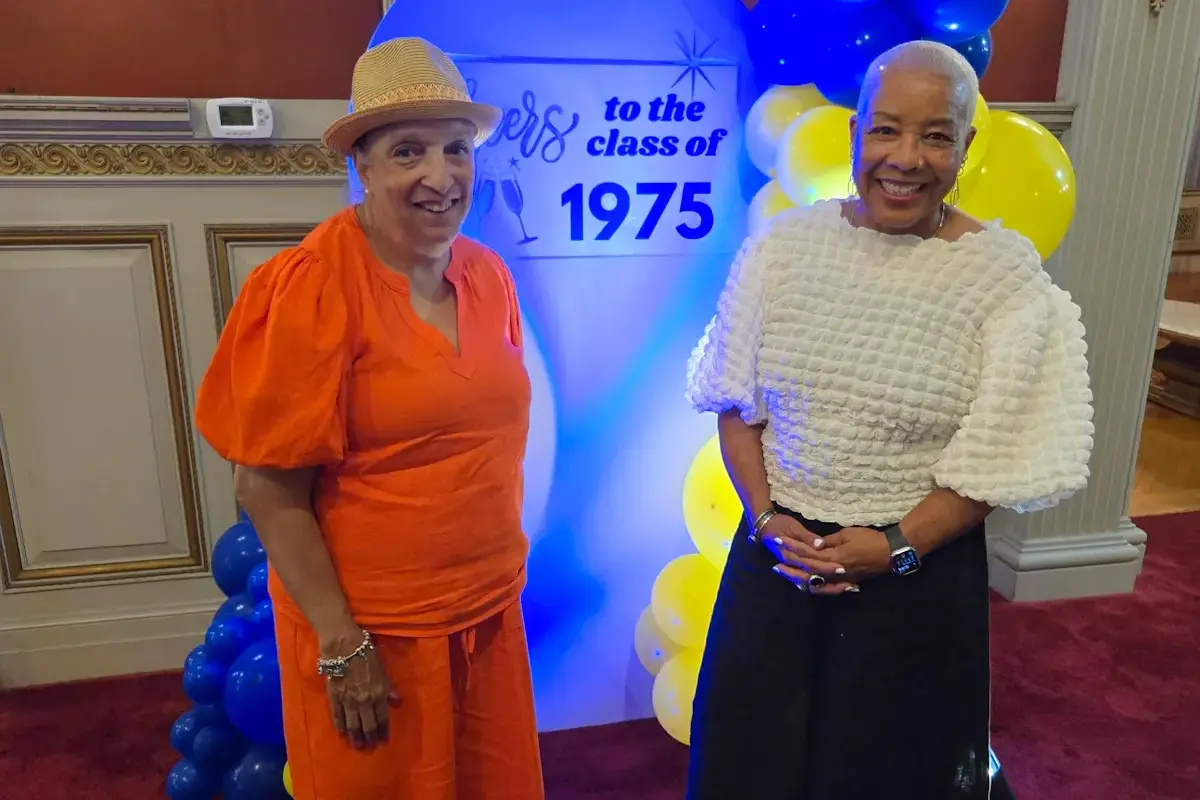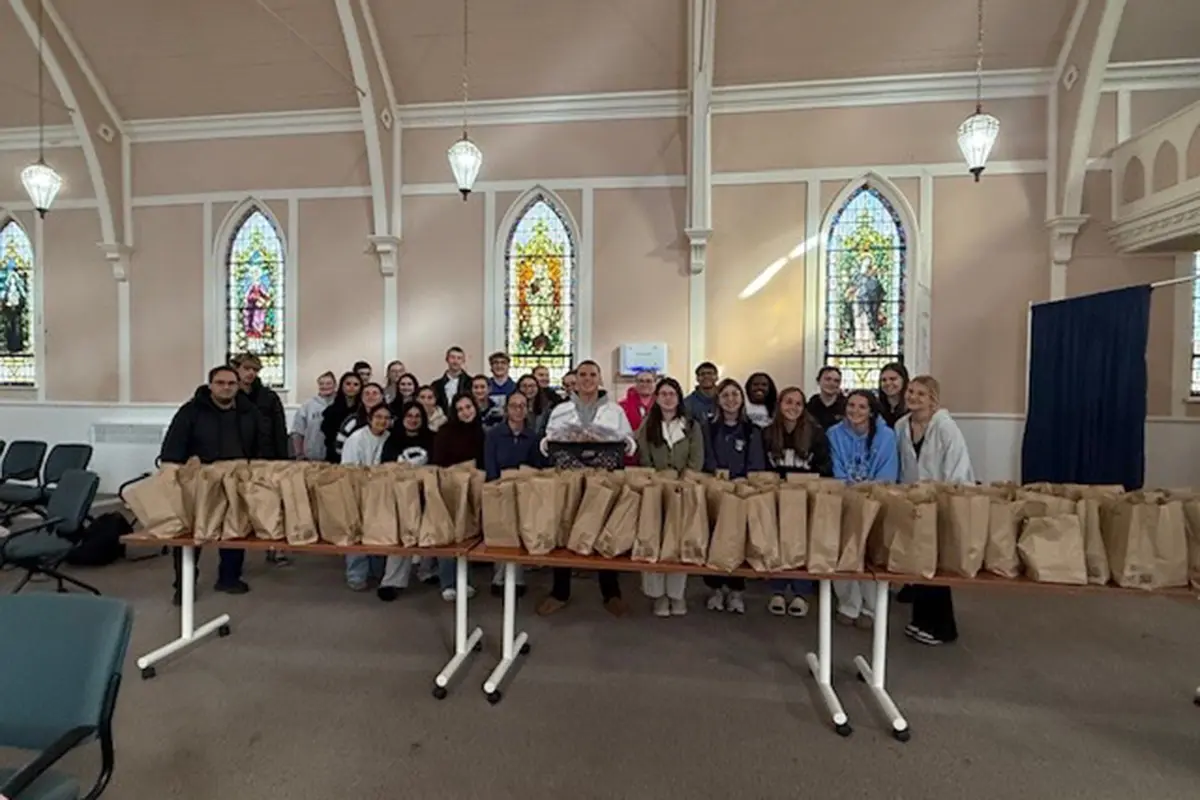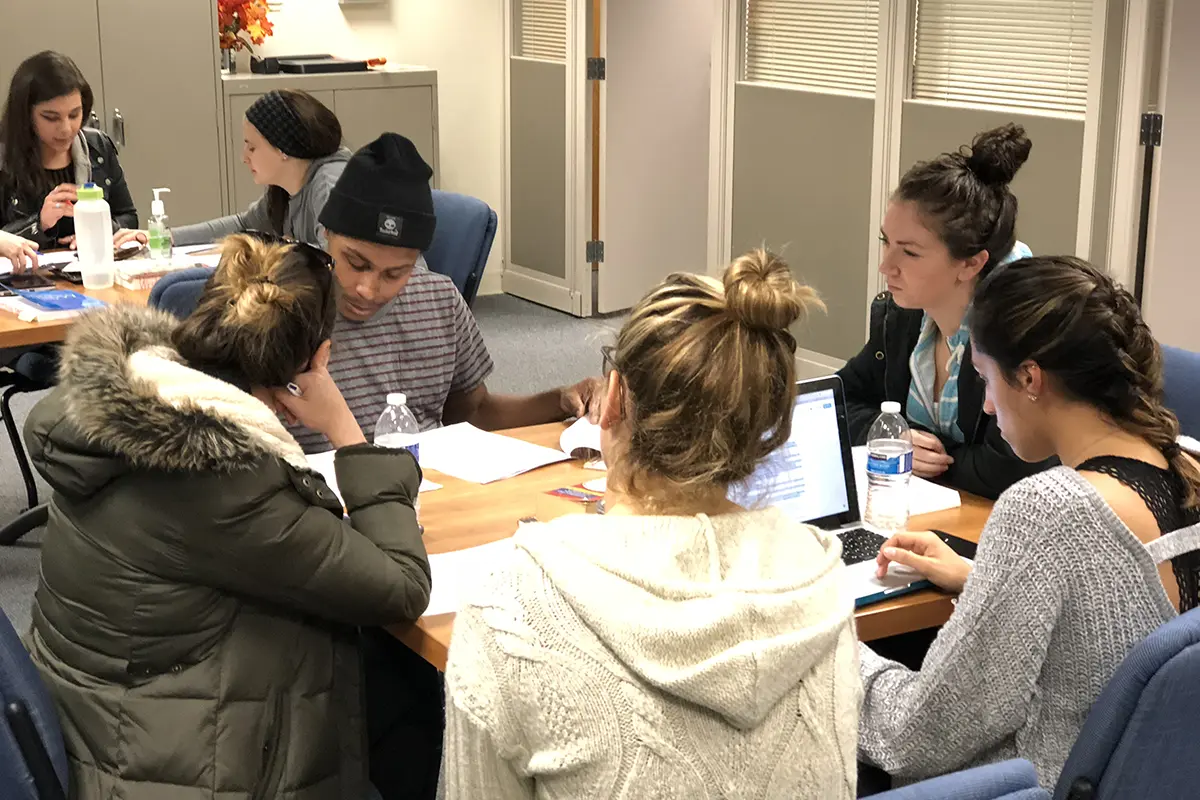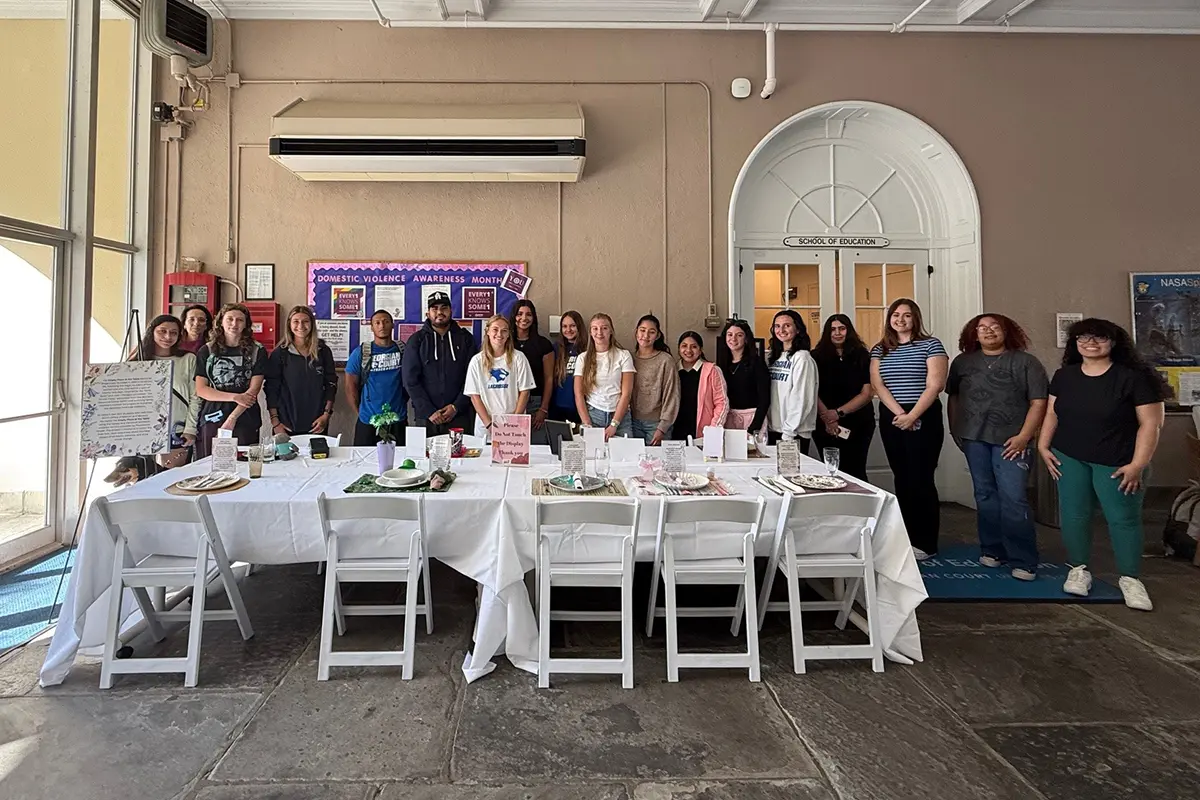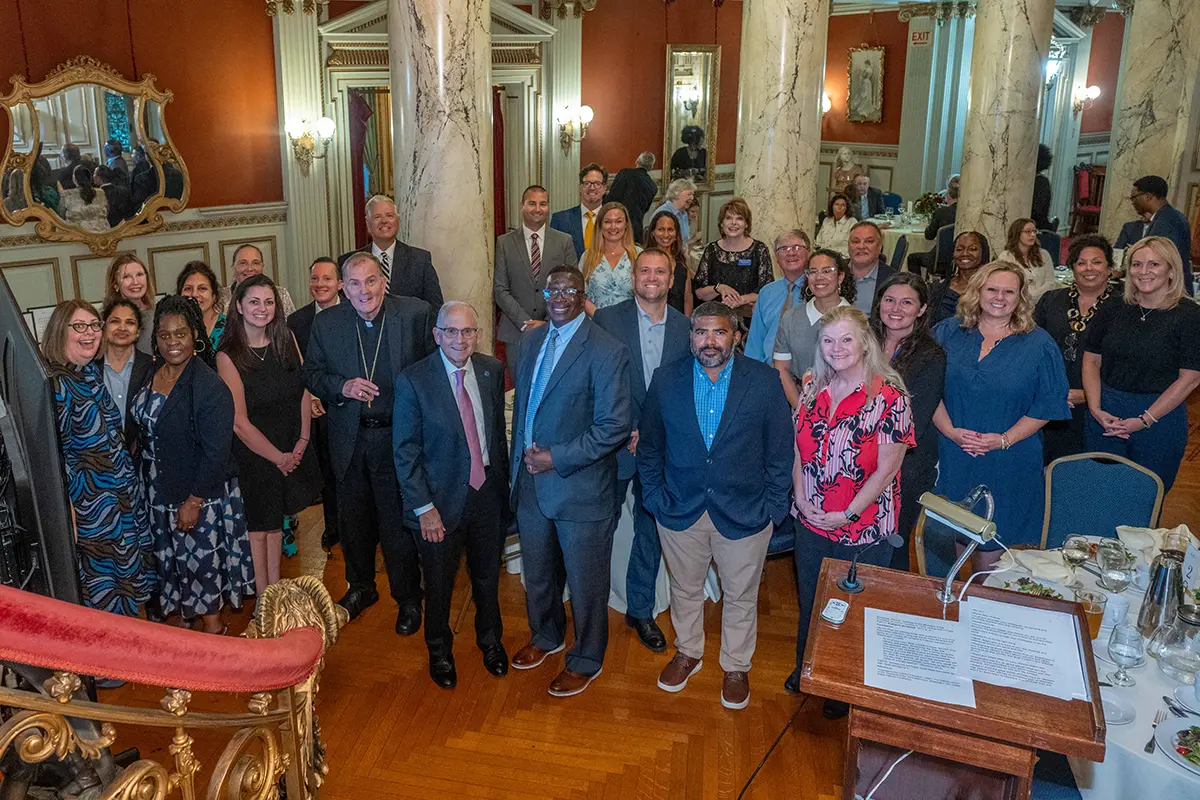Belynnda King ‘26 has spent months uncovering a fascinating piece of Georgian Court’s history: its connection to singer and radio star Jessica Dragonette, an alumna from the Class of 1923. Dragonette, who attended the university when it was still known as Mount Saint Mary College, was one of the most famous voices of her time. Through archival research, Belynnda uncovered details about Dragonette’s career and legacy—along with the long-lost portrait of the singer by Swiss artist Adolfo Müller-Ury, gifted to the university years ago by Dragonette’s husband.
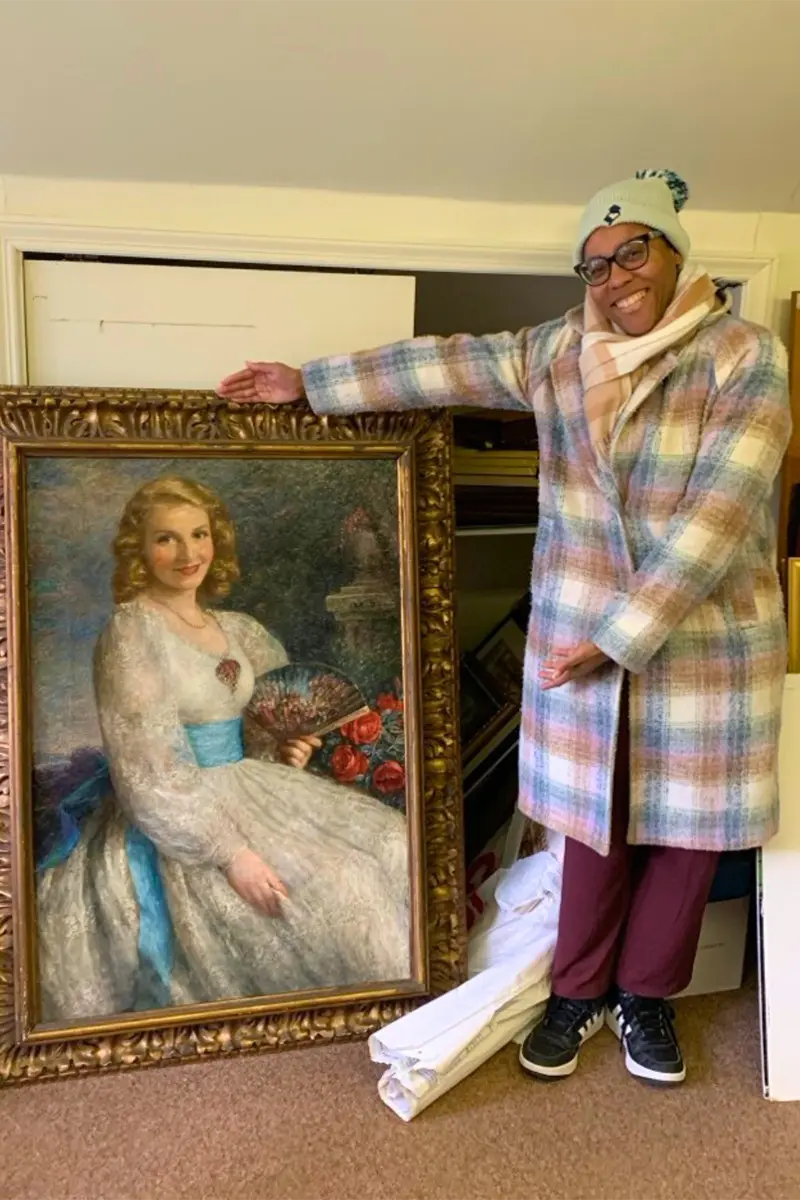
We sat down with Belynnda to learn more about her research, discoveries, and what it means to bring a piece of Georgian Court’s past into the present:
GCU: How did the opportunity to research Jessica Dragonette and her archives come about?
King: The opportunity came about from the Sister Maria Cordis Richey Center for the Humanities and Creative Arts. I am on the board as a Student Representative. Dr. Paul R. Cappucci and I were discussing how we can get the center up and running and the different events we can do to get the Richey Center’s name out there to faculty and staff. I mentioned that I was in the archives of the Sister Mary Joseph Cunningham Library, saw Jessica Dragonette’s name in many boxes, and spoke to Sister Barbara Williams, MLS, MA, who said she was a singer. I wanted to know more about her, so I began researching to find out who she was exactly.
GCU: What was the research process like?
King: The research process was interesting. It was more than searching for Dragonette’s name and seeing if anything came up. A lot of information resulted from my searches and I learned about who she was not only as a singer and radio personality, but also as a person.
GCU: What were some key findings from your archival research?
King: I found some articles and numerous memorabilia in the library archives, including her medals from Pope Pius XII for her religious work and the cape she wore to visit the Pope. I also discovered a few of her records and two keys to two different cities. She was a very influential person.
Dragonette received honorary titles from various military forces, including an honorary Colonel from the Navy, for her help selling War Bonds during World War II. She was also given Army wings.
I also discovered she was the voice for Persephone in one of Disney’s Silly Symphonies and the singing and talking voice for Princess Glory in the original Gulliver’s Travels. I found a few radio recordings of her on YouTube, and she was on the Palmolive show and a frequent guest on the Philco Hour. Dragonette was born in India on Valentine’s Day, which was very fitting.
GCU: What stood out to you during your research?
King: A plaque in the Casino on Georgian Court’s campus dedicates the stage to Jessica Dragonette. When the stage was built, she christened it and sang to an audience of 3,000 packed into the Casino.
Dragonette was an amazing person, singer, and alumnus. Even though she was a big-time radio star, she always returned to Georgian Court to participate in the annual Spring Musical. Even though she became a big star, she never forgot where she came from.
GCU: How have your studies at Georgian Court prepared you for this research project?
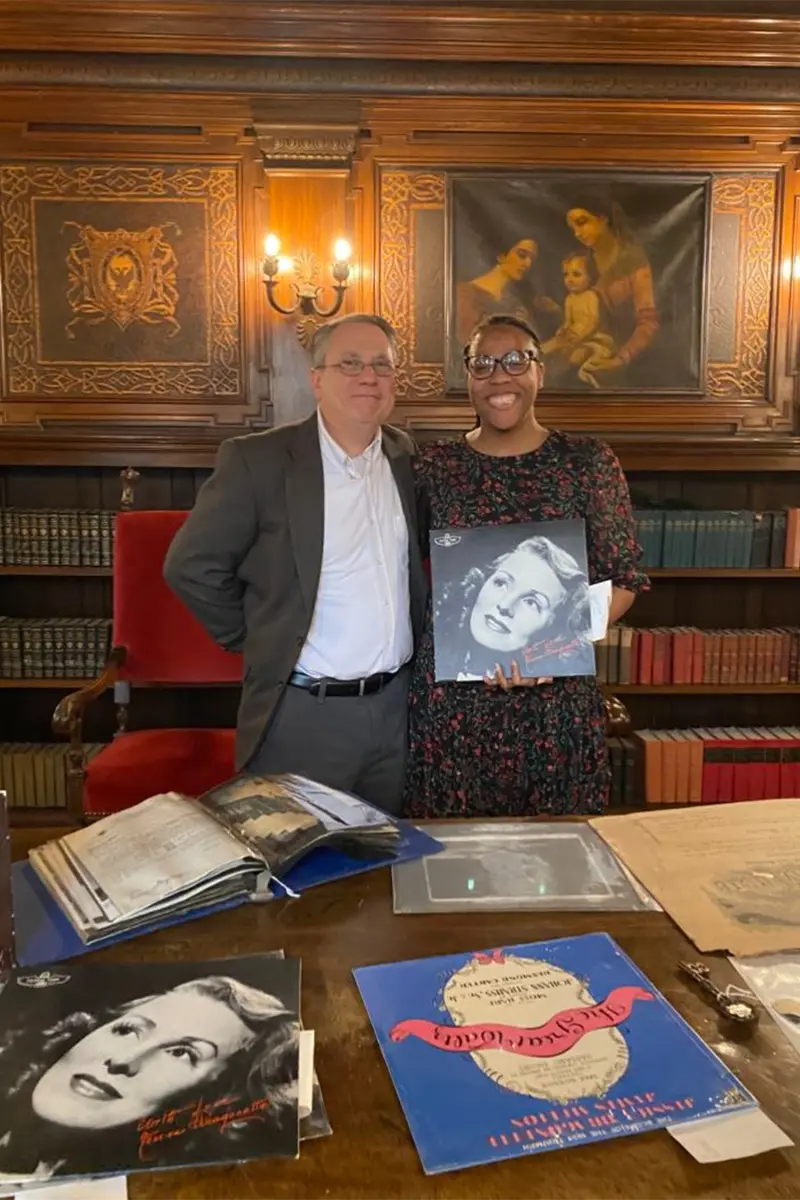
King: My studies at Georgian Court have helped me with this project because of my previous research and papers in my classes. It has taught me how to focus on specific information, compile information without oversharing about a person or subject, and categorize things.
GCU: How was your research project relevant to your major, minor, and concentration?
King: The project was relevant to all three. It included researching and writing about Jessica Dragonette and organizing all of the information in a specific way so my audience would understand it. It was also about presenting to a broad audience of people from different backgrounds.
GCU: How is your archival research relevant to your future career goals?
King: My project is relevant to two of my possible career goals. Besides becoming an author, I want to either be a project manager or a grant writer. In project management, you don’t only have to come up with the project, but you must also write about the project’s plan and how it will be executed in a certain amount of time and steps. Grant writing is similar; you have to come up with a reason for wanting a specific grant and how it would benefit your cause. Additionally, you must provide background and why you think the grant would fit into your cause or organization.
GCU: How did you prepare for your presentation during the Jessica Dragonette Tribute event in the Mansion, hosted by the Richey Center?
King: I reviewed the slides in my presentation repeatedly, ensuring all the information was in a specific order. I also checked for spelling errors and ensured all the dates were correct for my sources.
The event went well. It brought attention to Jessica Dragonette, who she was, what she stood for, and how such a big star went to Georgian Court, which no one knew until now.
GCU: What does it mean to you to bring Georgian Court’s past into the present?
King: It honestly means the world to me that I can bring something from the past into the present. Even though we are supposed to learn from the past so we don’t repeat it, we should also look to the past to see what we can learn from it and what we can bring into the future or bring into the light, just like Dragonette. If I hadn’t done this, nobody would have known of her, no one would have found the painting, and no one would have kept her image and songs alive.
GCU: What do you know about the past footage of Dragonette’s visit to Georgian Court College in about 1939/1940?
King: In the footage, there were clips of students enjoying their time at GCU, riding their bikes, coming in from the lagoon in a paddle boat, dressing up and walking outside because it was spring around that time, and getting exercise on the golf field, which is now our soccer field. Seeing how much has changed and shifted with the college and university was interesting. People always seem to have this bubbly love of this place, no matter what.
GCU: Why did you select the song “The Song is You” for the video Georgian Court’s librarians edited and put together?
King: That was the first song I heard of Jessica Dragonette when I found her music list on YouTube. After recording this song, Dragonette wrote a book named The Song is You. She also has another book, Faith is a Song: The Odyssey Of An American Artist, of which a few copies are in the library. This book contains a whole chapter about GCU and her time here.
I thought the song encapsulated Jessica Dragonette as a person and the school as a whole. The song talks about finding yourself, which people go to college to do.
GCU: How did you find Dragonette’s painting on Georgian Court campus?
King: The search started with my research because I found that she had a few paintings done by the same Swiss painter, Adolfo Müller-Ury. He was the only painter Dragonette went to, and they became close friends. It was fascinating that his name was not in any art books and that both Dragonette and Müller-Ury became lost in time. I discovered in the mid-80s that Dragonette’s husband gave the painting and memorabilia to Georgian Court, and that is how I learned the painting was on campus.
Then, it was time to hunt for the painting with Dr. Cappucci, Dr. Michael F. Gross, Ph.D., and staff member Yolanda. We all went into the Casino and Mansion basement, Jefferies Hall, and other locations around campus but could not locate it. Lastly, we searched in a loft space that is an old facility office above the North Dining Hall and found the painting, among other things.
GCU: What are the next steps for the portrait of Dragonette?
King: The portrait is going to be displayed on campus. I am collaborating with the Sister Mary Joseph Cunningham Library to find the best wall to display the painting. I wanted to put it on the wall before you go downstairs in the library under the Richey Center book nook or one of the side walls when you enter the library, but having it near windows can cause light damage. We are figuring out where it will be seen and not damaged.


